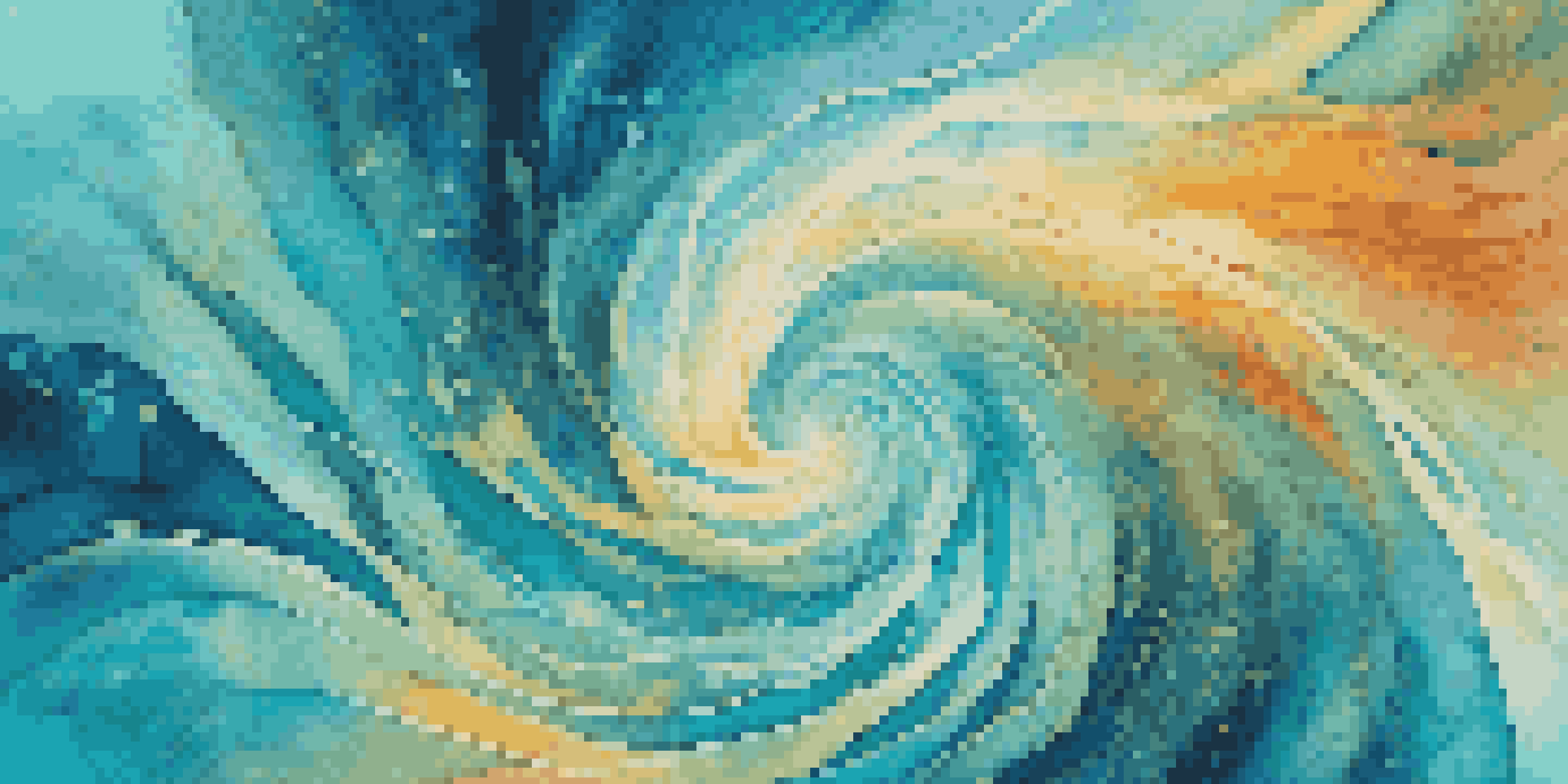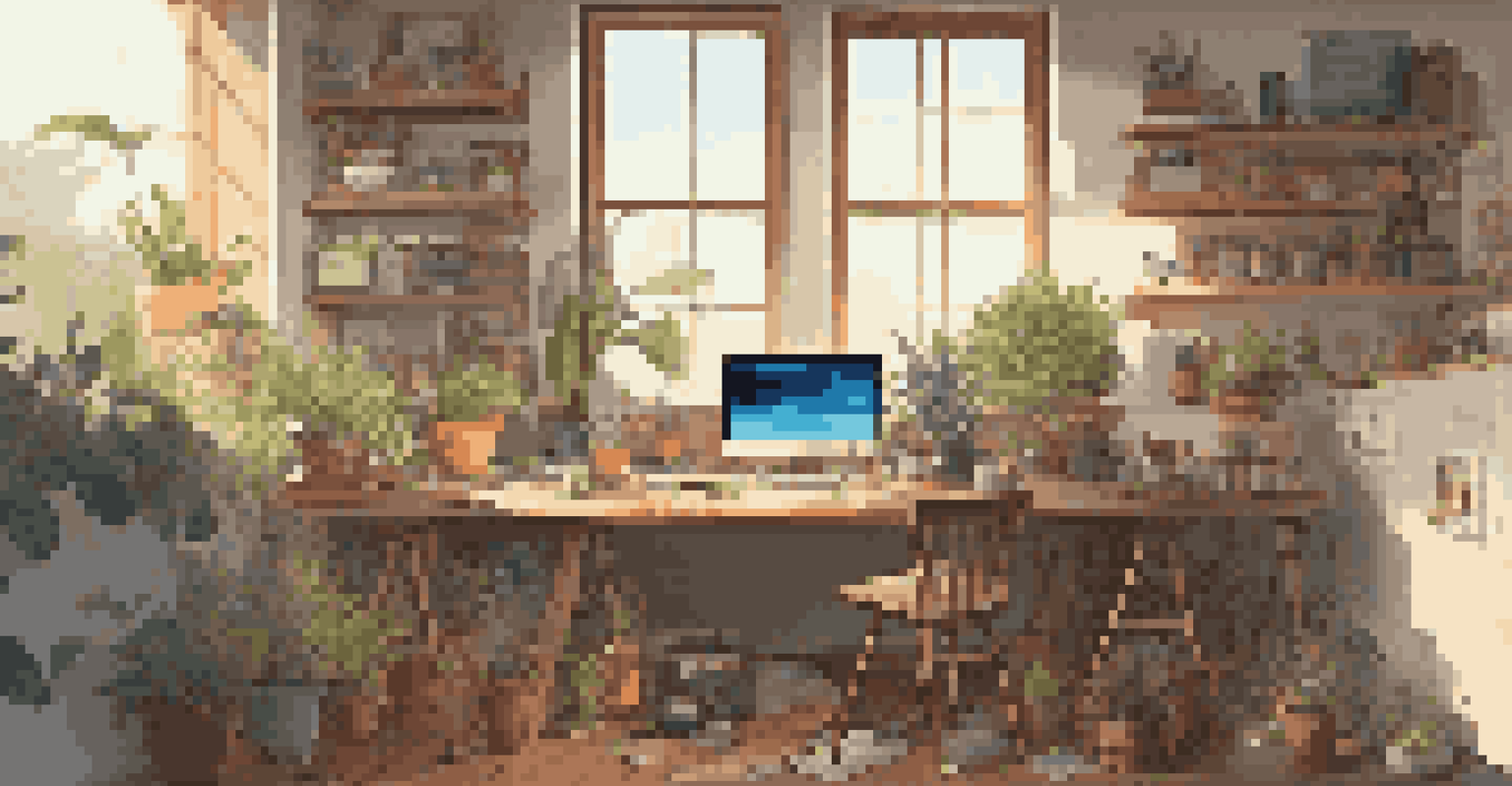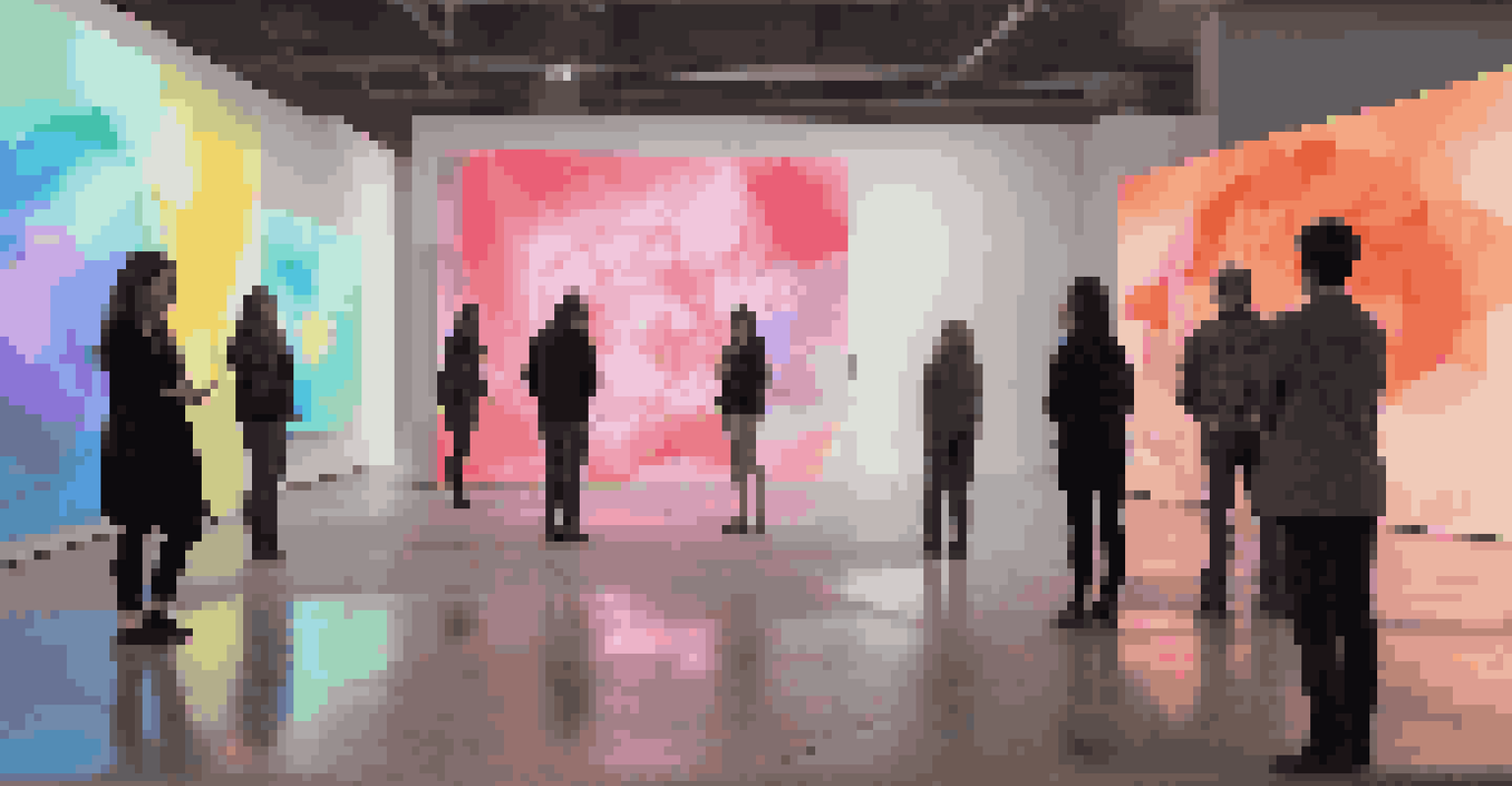Exploring Generative Art: Algorithms as Creative Collaborators

What is Generative Art and Why It Matters
Generative art is a fascinating blend of creativity and technology. At its core, it involves using algorithms to create artwork that can change and evolve. This innovative approach allows artists to explore new dimensions of creativity, often leading to unexpected and unique results.
Art is not a mirror held up to reality, but a hammer with which to shape it.
The significance of generative art lies in its ability to challenge traditional notions of authorship and creativity. By collaborating with algorithms, artists can push the boundaries of what art can be, making it a reflection of both human and machine creativity. It opens up a dialogue about the role of the artist in the creative process.
Moreover, generative art showcases the beauty of randomness and complexity. As artists harness computational power, they can create intricate designs that mimic nature, explore mathematical patterns, or even respond to real-time data. This intersection of art and technology is reshaping how we perceive creative expression.
The Role of Algorithms in Artistic Creation
Algorithms serve as the backbone of generative art, acting as creative partners that assist artists in their vision. They can generate patterns, shapes, and colors based on predefined rules or parameters set by the artist. This means that the artist is no longer the sole creator; instead, they engage in a collaborative process with their algorithms.

For example, an artist might program an algorithm to produce variations of a visual motif, allowing for countless iterations that would be impossible to create by hand. This collaborative approach not only saves time but also introduces an element of surprise, as the outcome may diverge from the artist’s original intent.
Generative Art Blends Creativity and Tech
Generative art merges algorithms and creativity, allowing artists to explore new forms of artistic expression.
Additionally, algorithms can analyze large datasets to create art that reflects societal trends or emotional states. This ability to interpret and visualize complex information adds depth and relevance to the artwork, making it resonate with viewers on multiple levels.
Famous Generative Artists and Their Impact
Throughout the years, several artists have made significant contributions to the field of generative art. One notable figure is Casey Reas, co-creator of Processing, a programming language designed for artists. His work emphasizes the potential of code as a medium, encouraging artists to embrace technology creatively.
The computer is a tool for the artist, not a substitute for the artist.
Another influential artist, Rafael Lozano-Hemmer, uses algorithms to create interactive installations that engage viewers in unexpected ways. His projects often incorporate elements like facial recognition and real-time data, transforming passive observation into an active experience.
These artists, among others, have not only pioneered new artistic styles but also inspired a generation of creators to explore the intersection of art and technology. Their works challenge us to rethink what it means to be an artist in an era defined by rapid technological advancement.
The Intersection of Art and Code
At its heart, generative art is about the fusion of art and code. Artists often need to learn programming languages to effectively communicate their ideas to the algorithm. This process can feel daunting, but many resources and communities exist to support artists in their journey into the world of coding.
By learning to code, artists can unlock new creative possibilities that were previously unimaginable. For instance, simple algorithms can produce stunning visual effects, while more complex ones can generate intricate animations that captivate audiences. The learning curve may be steep, but the rewards can be profoundly enriching.
Algorithms as Creative Partners
Algorithms act as collaborative tools for artists, generating diverse variations and adding depth to the creative process.
In this way, coding becomes an integral part of the artistic process, much like paintbrushes or canvases. The artist's role shifts from being a sole creator to becoming a curator of possibilities, guiding the algorithm to produce works that reflect their vision.
Generative Art in the Digital Age
The digital age has greatly influenced generative art, providing artists with powerful tools and platforms to share their creations. Online galleries and social media have made it easier than ever for artists to showcase their work to a global audience. This accessibility has fostered a vibrant community of generative artists who inspire and support each other.
Additionally, the rise of virtual and augmented reality has opened new avenues for generative art. Artists can create immersive experiences that allow viewers to interact with their work in real time, creating a dynamic relationship between the art and the audience. This evolution is redefining how art is experienced and appreciated.
Moreover, advancements in artificial intelligence and machine learning are pushing the boundaries of what generative art can achieve. These technologies enable algorithms to learn from existing artworks and create entirely new pieces, raising questions about originality and authorship in the art world.
Challenges and Ethical Considerations
While generative art offers exciting possibilities, it also presents unique challenges and ethical considerations. One major concern is the potential for algorithmic bias, where the data used to train algorithms can inadvertently lead to skewed or harmful representations in the artwork. Artists must be mindful of the implications of their choices and the data they use.
Another challenge is the question of ownership and copyright. When an artwork is created through a collaboration between an artist and an algorithm, who holds the rights? This ongoing debate highlights the need for clearer guidelines and discussions about authorship in the age of generative art.
Future Trends in Generative Art
Emerging technologies and eco-friendly practices are shaping the future of generative art, expanding its accessibility and relevance.
Ultimately, navigating these challenges requires a thoughtful approach. Artists and technologists alike must engage in open conversations about the ethical dimensions of their work, ensuring that generative art remains a force for positive expression and innovation.
The Future of Generative Art: Trends to Watch
As technology continues to evolve, so too will the landscape of generative art. One trend to watch is the integration of more advanced AI tools that can generate artwork with minimal input from the artist. These tools have the potential to democratize creativity, allowing anyone to create art, regardless of their technical skills.
Additionally, there is a growing interest in sustainable and eco-friendly practices within generative art. Artists are exploring ways to use algorithms to reflect environmental themes and raise awareness about climate change, making their work not only visually striking but also socially relevant.

Finally, the continued fusion of generative art with other disciplines, such as music and performance art, promises to create innovative cross-disciplinary experiences. As artists experiment with new mediums and technologies, the future of generative art looks bright and full of possibilities.